Ford City Mall is Chicago’s last remaining in-city regional mall. Located on the far southwest side of the city at 76th Street and Cicero Avenue in the West Lawn neighborhood, just south of Midway Airport, Ford City has a storied past.
The site where Ford City Mall now stands was originally a defense plant, constructed during World War II. During the height of the war, a total of 10 buildings were constructed – the largest, Building 4, was over 62 acres in size. The entire site was 432 acres, and was used to make aircraft engines for the war effort, including those for the B-29 Bomber.
At the end of the war the buildings were no longer necessary for defense production and were largely abandoned in 1945. In 1947, the former engine production facility was transformed into an auto manufacturing plant when it was purchased by the Preston Tucker car company. Tucker used the facility to make its Tucker Torpedo, which was billed as the first “modern automobile” in the industry at the time. However, due to competition from the “Big Three” and fraud allegations by the SEC, Tucker went out of business not long after, and the factory was once again abandoned.
In 1950, Ford Motor Company purchased the site and once again put it to use for airplane engine construction during the Korean War. Ford ended up using the plant well after that war, until 1959, when it was idled once again.
In 1961, a group of local investors purchased the site, judging that it would be a perfect spot for large-scale retail. Chicago only had a handful of regional shopping centers at the time, as their advent was relatively new, and being on the growing edge of the second largest city in the country had immense benefits.
The northern part of the former factory site remained industrial, and the southern section of Building 4 was partially demolished and refashioned into two separate retail buildings, both of which opened for business in 1965 as Ford City Mall. The north retail building, North Mall, was made into a strip mall, anchored by a supermarket (Kroger, then Jewel?), a bowling facility, toy shop, and a small two-screen cinema.
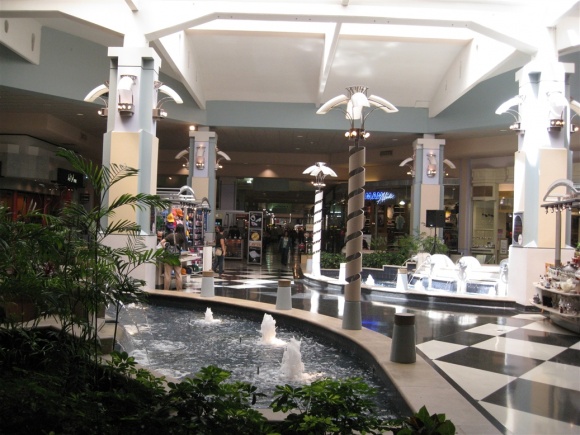 The south building, across the parking lot from the strip center, was fashioned into an enclosed mall, much larger than the strip mall. It was anchored by a one-level, 156,000 square-foot Chicag0-based Wieboldt’s department store and a one-level 182,000 square-foot JCPenney, with an enclosed corridor of stores connecting them. Also present in the enclosed mall was junior-anchor Woolworth’s, a Lerner, and Harvest House Cafeteria.
The south building, across the parking lot from the strip center, was fashioned into an enclosed mall, much larger than the strip mall. It was anchored by a one-level, 156,000 square-foot Chicag0-based Wieboldt’s department store and a one-level 182,000 square-foot JCPenney, with an enclosed corridor of stores connecting them. Also present in the enclosed mall was junior-anchor Woolworth’s, a Lerner, and Harvest House Cafeteria.
Connecting the strip center on the north end of the complex to the enclosed mall on the south end was, and is today, a subterranean corridor. When the mall opened, it was called Peacock Alley, and it directly connected the North Mall strip center with the middle of the enclosed mall. Located under the parking lot, Peacock Alley was accessible from the Jewel (now Sears) entryway, from a station in the parking lot, and from the center court of the enclosed mall. It was an interesting setup, and it still exists today.
After Ford City opened in 1965, competition came when Evergreen Plaza, an open-air mall located 5 miles away in Evergreen Park, enclosed and expanded. In 1975, the large two-level North Riverside Park Mall opened 10 miles away in North Riverside, and in 1981, the sprawling one-level Chicago Ridge Mall opened 4 miles away in Chicago Ridge. Despite the competition, however, Ford City Mall remained the closest mall to its core market on the south side of the city. Changes did occur, though, due to this competition taking away Ford City’s suburban market.
A demographic shift in the years following Ford City’s mid-1960s debut also changed the face of the stores and, unfortunately, its reputation. Many African-Americans came to live on Chicago’s south side in the latter half of the 20th century, and many neighborhoods changed to be predominantly black. In addition, many Hispanics have also come to live in the areas around Midway airport and in some of the suburbs nearby, including the neighborhood of West Lawn, where the mall resides. The stores at Ford City slowly began to change to serve this demographic.
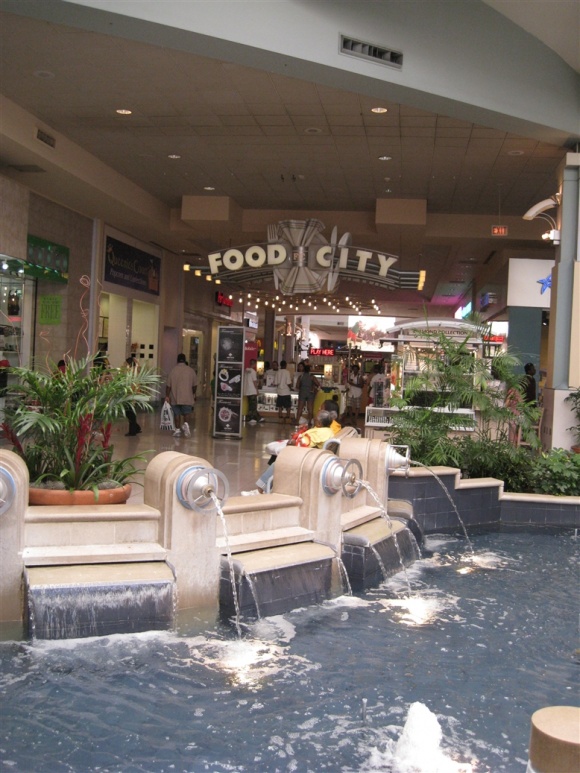 Around the same time the demographic changed, the mall began to earn the reputation for being home to a criminal element. Sadly, the reputation has merit, as numerous murders have occurred on mall property, including a 2006 shooting of a teenage boy who was trying to break up a fight at the movie theater and a 2001 carjacking where a mother was murdered in front of her two children. This crime is not limited to the recent decade, as evidenced by a gangland incident in the 1970s that forced the renaming and retenanting of subterranean Peacock Alley, which had become a seedy environment full of head shops and drug selling, to The Connection. For the record, I’ve been to Ford City at least 10 times and have never been pestered by anybody other than the cell-phone hawkers at their kiosks…
Around the same time the demographic changed, the mall began to earn the reputation for being home to a criminal element. Sadly, the reputation has merit, as numerous murders have occurred on mall property, including a 2006 shooting of a teenage boy who was trying to break up a fight at the movie theater and a 2001 carjacking where a mother was murdered in front of her two children. This crime is not limited to the recent decade, as evidenced by a gangland incident in the 1970s that forced the renaming and retenanting of subterranean Peacock Alley, which had become a seedy environment full of head shops and drug selling, to The Connection. For the record, I’ve been to Ford City at least 10 times and have never been pestered by anybody other than the cell-phone hawkers at their kiosks…
In 1983, the first and only expansion took place at Ford City, when a one-level, 172,000 square-foot Montgomery Ward was added to the south side of the mall. In 1987, Wieboldt’s closed when that chain folded, and in 1989 the former Wieboldt’s space was replaced with Carson Pirie Scott. Meanwhile, in 1988, the entire mall was renovated and a food court, Food City, was added along the corridor connecting Montgomery Ward with the rest of the mall.
The 1990s and 2000s were a mostly static time for Ford City, with the biggest event being the departure of Montgomery Ward in 2001 and a large explosion in 2005. Unfortunately, Wards has not been retenanted as of 2010, but in 2008 General Growth took over management of the mall and promised a renovation and expansion of the mall in general. Around the same time, General Growth declared bankruptcy and the economy had a meltdown, though, so no progress on these fronts has been made. The problems have been exacerbated with the March 2010 annoucement of Sears’ departure, which is slated to close by July.
In 2005, an underground gas line exploded under Ford City’s parking lot, causing significant damage to buildings, overturning cars, and closing the mall for several days. The explosion also injured 10 people.
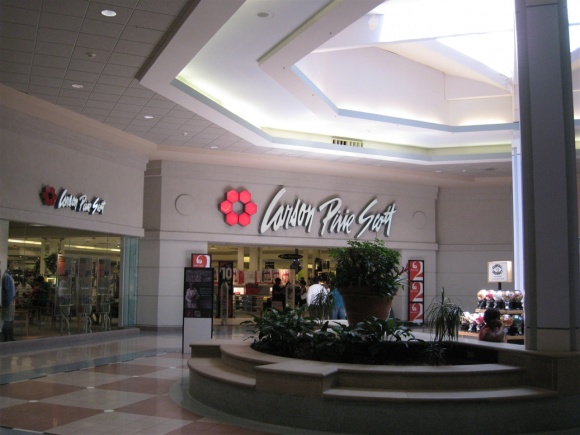 Today, Ford City Mall soldiers on. The renovation and expansion would be appreciated, as there are relatively few vacancies in the mall itself due to the large population it serves, despite many of the stores being local. The renovation would also prop up the mall’s image and reputation, as was the case with Mondawmin Mall in Baltimore. In addition, the Chicago Transit Authority is also extending its Orange Line “L” train to Ford City Mall from its current terminus two miles north at Midway Airport, with service by 2016, which could also pull together enough support for a renovation and much greater potential for the site.
Today, Ford City Mall soldiers on. The renovation and expansion would be appreciated, as there are relatively few vacancies in the mall itself due to the large population it serves, despite many of the stores being local. The renovation would also prop up the mall’s image and reputation, as was the case with Mondawmin Mall in Baltimore. In addition, the Chicago Transit Authority is also extending its Orange Line “L” train to Ford City Mall from its current terminus two miles north at Midway Airport, with service by 2016, which could also pull together enough support for a renovation and much greater potential for the site.
The two portions of the mall also still exist today. North Mall, the strip center, is now tenanted by Conway, Old Navy, Marshalls, Anna’s Linens, Office Depot, and other stores. The main mall is still anchored by Carson Pirie Scott and JCPenney, and still has the late-80s look to it. Fortunately, the large fountains at center court are still there, giving the mall a retro verve. We hope they keep them in the upcoming renovation, if it happens. In addition, the subterranean level, The Connection, is still there, and sparsely tenanted with smaller shops including jewelry stores, a Chinese gift shop, and a 99 cent store.
We last visited Ford City in June 2010 and took the pictures featured here. Feel free to leave your comments here if you have anything to add.
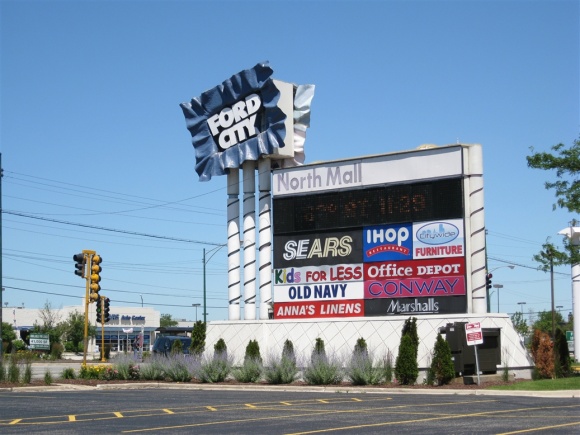 Ford City Mall is Chicago’s last remaining in-city regional mall. Located on the far southwest side of the city at 76th Street and Cicero Avenue in the West Lawn neighborhood, just south of Midway Airport, Ford City has a storied past. The site where Ford City Mall now stands was originally a defense plant, constructed during World War II. During the height of the war, a total of 10 buildings were constructed – the largest, Building 4, was over 62 acres in size. The entire site was 432 acres, and was used to make aircraft engines for the war effort, including those for the B-29 Bomber. The northern part of the former factory site remained industrial, and the southern section of Building 4 was partially demolished and refashioned into two separate retail buildings, both of which opened for business in 1965 as Ford City Mall. The north retail building, North Mall, was made into a strip mall, anchored by a Jewel Supermarket, a bowling facility, toy shop, and a small cinema.
Ford City Mall is Chicago’s last remaining in-city regional mall. Located on the far southwest side of the city at 76th Street and Cicero Avenue in the West Lawn neighborhood, just south of Midway Airport, Ford City has a storied past. The site where Ford City Mall now stands was originally a defense plant, constructed during World War II. During the height of the war, a total of 10 buildings were constructed – the largest, Building 4, was over 62 acres in size. The entire site was 432 acres, and was used to make aircraft engines for the war effort, including those for the B-29 Bomber. The northern part of the former factory site remained industrial, and the southern section of Building 4 was partially demolished and refashioned into two separate retail buildings, both of which opened for business in 1965 as Ford City Mall. The north retail building, North Mall, was made into a strip mall, anchored by a Jewel Supermarket, a bowling facility, toy shop, and a small cinema. 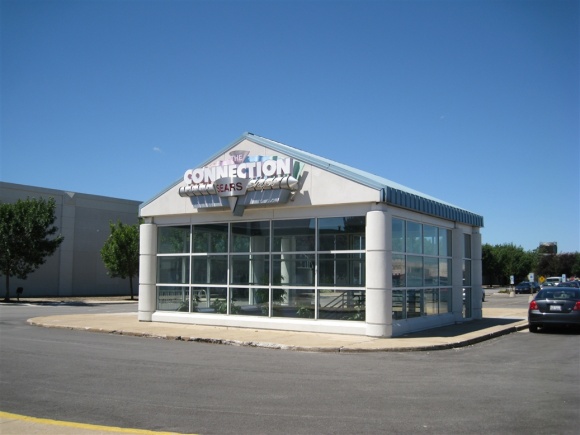

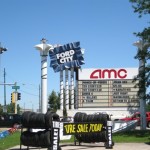
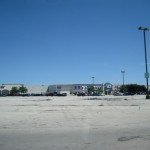
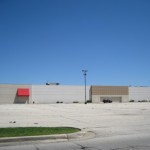
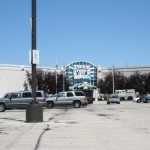
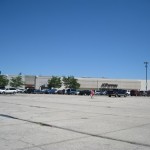
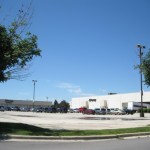
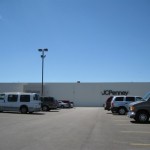
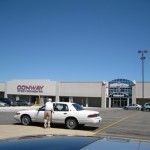
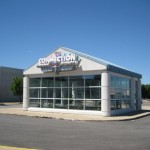
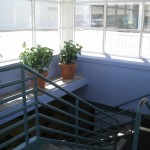
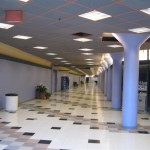
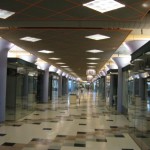
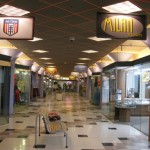
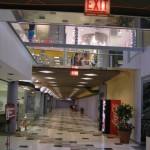
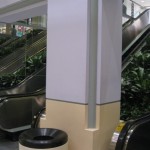
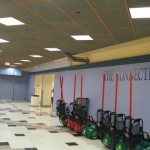
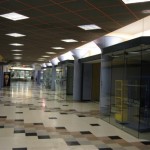
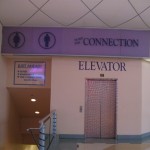
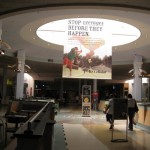
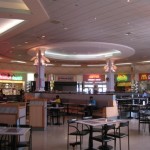
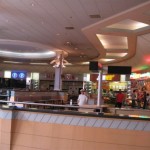
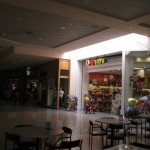
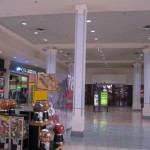
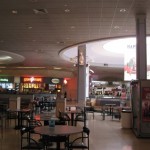
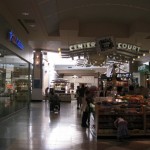
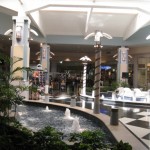
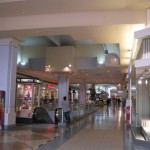
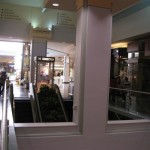
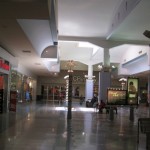
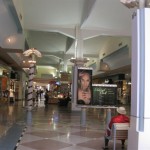
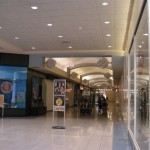
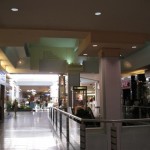
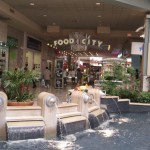
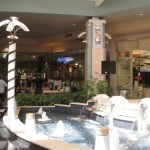
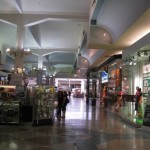
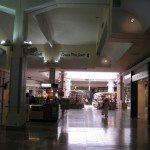
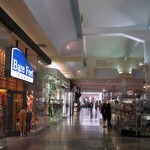
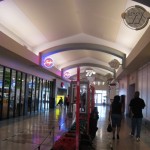
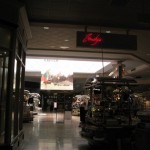
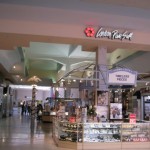
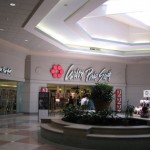
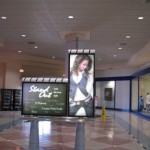
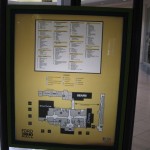
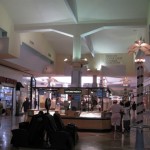
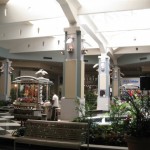
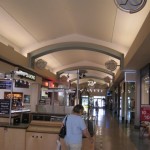
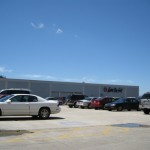
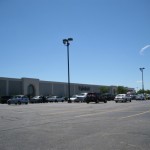
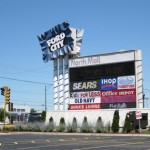
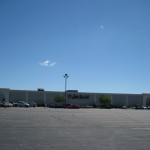
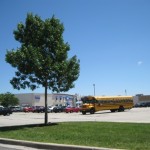
I believe Kroger was an original tenant, perhaps rather than Jewel.
The Ford City Wieboldt’s was it’s biggest volume branch when the chain folded. The mall was quite busy and drew a diverse customer base in the mid-80s. I don’t know that it would have been considered “troubled” at that point.
As for in-city regional malls in Chicago, the only other one was Brickyard, so Ford City’s survivor status is pretty unremarkable. Harlem-Irving Plaza and Lincolnwood are a little outside the city limits. Water Tower, 900 Michigan, etc. are downtown. Chicago does have a number of thriving neighborhood retail districts such as Six Corners and the Clybourn corrdior which could be considered regional draws—Six corners is healthier than it was 30 years ago and Clybourn was carved out of an industrial corridor to serve gentrified neighborhoods. Some neighborhood areas have declined (e.g., Englewood, South Chicago) or had significant ups and downs (Lincoln/Belmont area), but only Englewood was a significant regional draw, once the largest shopping area outside of the Loop.
Does anyone know when the General Cinema/ AMC originally opened? Was it ever remoddled?
A mall with an underground connection! Cool!
That is a really, really cool looking mall…the way that far more of them should be. Malls with a lot of history like this should all be treated this way.
@Rich, I think it might have been Kroger too – the other sites I found all said Jewel though. Confusing! Was anyone else around then? When did it become Jewel? And, for that matter, when did Jewel become Sears?
In addition to Lincolnwood and Harlem-Irving, Evergreen Plaza is also across the street from the city limits. North Riverside Mall serves the west side too, and it seems like everyone in Chicagoland visits the Woodfield area.
I do love the numerous neighborhood shopping districts in the city. I think the Art Deco Sears at Six Corners is one of the most unique, and the blight in the Englewood corridor – including the outdoor pedestrian mall at 63rd and Halsted – is amazing.
There was a SuperX even after Kroger was long gone from Chicago, so I suspect it was a Kroger.
ShopKo Fan,
The Orange line of the El is not underground, so I’d expect the new station to be street level or elevated.
Hey, uh, what happened to the main layout of the site? It’s all black and some weird music is playing.
@Pseudo3D, got hacked. We’re slowly repairing all of the damage now but most of the functionality of the site should be back.
@Prange Way, Yeah, I forgot about Evergreen. The 1920s/30s Oak Park and Evanston shopping districts also would have applied—Field’s and Wieboldt’s were in both. Englewood once had Sears, Goldblatt’s, and Wieboldt’s, plus large Kresge and Woolworth stores. I never saw it in its heyday and much is gone now. I did a site visit for a project around there and I was amazed at the small area where everything had been concentrated. That sort of thing reminds you of why malls are difficult to repurpose–they usually have far more real estate and the buildings lend themselves less to new uses. Englewood was one of the first Wieboldt’s to close–they got a great deal on their Evanston store at about the same time and closed that as well as a store on Chicago Avenue.
Kroger departed Chicago in 1971–most stores went to Dominick’s. Ford City might have been too close to the inner city for them–Dominick’s was more concentrated N and W of the city and only had a few stores in Chicago proper. One of the last Chicago Kroger stores to open was on Broadway near Oakdale. It was a long running Dominick’s, but suffered in a fire a number of years ago.
The JCPenney is probably only the charter tenant left in the mall. The JCPenney auto center was actually kept and turned into a separate furniture store.
Reading around MallsofAmerica and Mall Hall of Fame, at some point, Peacock Alley/The Connection was truncated and the current Connection is much smaller than the original.
The place where Sears is now was at one time a Jewel Grocery Store and a Turn-Style Department Store, which at the time ws owned by Jewel. After Turn-Style closed, the store became a Venture Department Store. When Venture departed and after the remodel is when Sears opened.
The current AMC theaters opened as General Cinema, and switched to AMC upon General Cinema closure. Before the current cinema building, General Cinema ran the Cinemas out of the north all, starting with 2, and then eventually expanding it to 4 or 5.
SuperX used to be in the center part of the mall, on the same side of the mall that Woolworth was, but across the center mall. Also in the mall just outside JCPenney was a National Supermarket, when the National closed the store was divided into other stores and at one time included a John’s Garage restaurant.
I grew up within walking distance of the mall and all through high school it was apopular hang out on the wekends.
The JCPenney Auto Center became a Firestone when JCPenney decided to get out of the Auto Repair business and sold most of their Auto Centers to Firestone. When Firestone was absorbed by Bridgestone, most of the Auto Centers were closed, and JCPenney took over the space and moved the furniture department into the space.
Also in the north mall, there was a large bowling alley and a Homemakers Furniture Store as well as a Minnesota Fabrics and a few other smaller stores.
I moved out f the area in the 90’s and I am not sure exactly what stores are still there, but would like to visit the mall again next time I come home to visit the family.
@Scott, In some markets, Minnesota Fabrics took over former Kroger locations. That might answer the question of whethere there was a Kroger. National had anti-trust problems from its acquisitions in the 50s and probably would have had difficulty taking over a Kroger store, but they would have been another possibility.
@Rich, the Kroger and later Jewel food store or Minnesota Fabrics was in the North Mall – which is the strip mall, and faces the north parking area. The National Food Store was in the main mall in a side mall leading to a mall entrance by JCPenney and faced the south parking lot. The National store though was gone I beleive by the mid to late 70’s and was replaced by regular inline stores.
I don’t recall Kroger, but I do remember the Jewel and their other store Turn-Style. After Jewel and Turn Style closed, also in the late to early 80’s that location was changed into a Venture Department Store and closed later when that chain started to go under. I know Sears came in the mid 90’s after the mall was renovated.
@SEAN, The current AMC theaters opened in the early to mid 90’s as General Cinema. When General Cinema folded the theaters were taken over by AMC. Not sure if AMC remodeled them at all, but during the 70’s and most of the 80’s the Cinemas, operated by General Cinema were located on the strip mall part of the center. There were originally 2 and they were expanded to 3 and at one point one of the original 2 was divided to create a 4th theater. By todays standards the original 2 theaters were quite large.
@Prange Way, I don’t recall there being a Kroger there, but I do know that in the 70’s it was a Jewel Food Store. At that time Jewel was associated or owned the Turn-Style stores and where Sears is vurrently was at one point a Turn-Style store. When Turn Style closed down the space was taken over by Venture Department Store chain. After they closed down I beleive part of the space, or part of the space in the strip mall, became a Childs World Toy Store and then it was finally turned into a Sears in the mid 90’s when the mall was remodeled into teh way it looks today.
Do either JCPenney or Wieboldt’s/Carsons have basements? Also, what type of retailer is Conway?
The first Wieboldt’s store to close was in the West Town district bordered by Ashland, Madison, and Monroe, and Ogden Streets. It closes as a department store in 1958, but continued as a supermarket (which several other branches had as well) until the late 1960’s. The Englewood and Milwaukee Avenue (the first Wieboldt’s) closed in 1975, Evanston in 1982, Meadowdale (in Carpentersville) in 1983, and Lakhurst in 1986, a month before their bankruptcy filing.
On March 21, 1987, they announced to close the stores in Lincoln Mall (Matteson), Jefferson Square (Joliet), Orland Park Place, Oak Park-River Forest, Yorktown (Lombard), Stratford Square (Bloomingdale), Lakeview and Lincoln Village both in Chicago’s north side. Does anyone recall if they closed them immediately that day without liquidating?
The Ford City and State Street flagship (formerly Mandel Bros.) closed in July 1987, Harlem-Irivng (Norridge) in October, and finally Randhurst (Mt. Prospect) in December.
@Scott, I remember when AMC baught General Cinema, AMC & GC were both public companies at that time.
GC’s demise was as interesting as it was tragic. Durring the 1990s most large cinema circuits were posissioning them selves for growth by aquiring top tier sites. When the decade ended GC was unable to get most good sites & this was reflected in a 1997 report put out by Bear Sturns. Yes! Bear Sturns.
The report indicated that GC’s survival was questionable do to the agressive actions of the other circuits. Fast foward five years & GC no longer exists & most of the other companies are just comeing out of bankruptcy. Remember there was an enormous building boom for megaplexes at that time & most circuits went way overboard.
@Scott, Kroger would have departed by 1971.
@Randy, Wieboldt’s sold furniture at Ford City, which they did not do at all of their other stores. The annex at Lakeview (now demolished, but across the street from the main store) also sold furniture–that area once was a major hub for furniture retailing in Chicago. The Ford City Wieboldt store may have been enlarged at some point to incorporate the large furniture department. It and Harlem-Irving were the highest volume branches at the time of bankruptcy.
The National store probably closed when the chain pulled out of Chicago in the late 70s. Most of the larger stores went to A&P or the various Certified-related indies like Butera (which later inherited the better A&Ps, including many ex-Nationals). Walgreens bought many of the smaller National stores in Chicago.
Did River Oaks and Chicago Ridge Mall affect the Ford City Sears? It’s very rare for Sears to leave a mall.
@JJP,
No. The River Oaks Sears dates from the construction of the mall in 1966, and the Chicago Ridge one either dates from the construction of the mall (1982) or predates it. This Sears was a late add on in a former TurnStyle/Venture in 1990.
What even more interesting is that Montgomery Ward operated stores at Ford City (1983 – add on), Evergreen Plaza (1965 – former The Fair), and Chicago Ridge (1992 – former Madigan’s) until the chain’s closing in 2001. Carson’s operates likewise.
Does Sears have a store on Stony Island, in the East 70s? That would be the closest store, and a twin to the one on Lawrence, both of which are smaller than the one at Six Corners. Sears has kept urban freestanding stores in few places, with Chicago being one of them.
@Rich,
There’s one near 63rd and Western.
This is such a nostalgic posting for Ford City for this here Gen-Xer! I grew up in Wrightwood, just 2.5 miles southeast of the Mall, and this was a favorite haven of mine during the 1980’s and early 90’s. The Connection had some very cool obscure outlets down there to shop around for back then.
I actually took an impromptu trip to FC last February, but unfortunately it is no longer the place I remember from those halcyon days of my youth. Too much congestion, rowdiness, and the Connection appeared disemboweled upon re-visiting it in more than a decade. Carson’s was the only unsullied remnant still standing there. Sad to say it will be my last visit there ever….I much rather remember FC in her resplendent glory of General Cinemas, John’s Garage, Montgomery Ward’s, JCPenney, and Record Town!
Hey, does anyone remember the Ford car dealership in the mall? I do, it was Murphy Motors. In 1977 I bought a 1970 Chrysler 300 convertible from there, which I still own today….
@Randy, Wiebolds started liquidating right after the 1986 holiday season ended. Ford City, HIP, Randhurst were their biggest stores and received all the stuff they wouldn’t sell at the other locations, probably why they lasted a little longer.
@Rich, i have been trying to retrieve info on visitors goes to ford city mall each year and if there is any comparison from the time its open and now, do you have any idea or know source that I can get, thanks
please email info on number of visitors goes to ford city mall on south side of chicago each year and if there is any comparison from the time it opened and now or know the source that i get this information from. thanks
Yes,yes it is ghetto! Can’t pay on my Discover account. My girlfriend was harassed by a JCPenney employee. It seems that it has gotten worse in the last 10 years. Too many “urban” stores. Not one place you can purchase a suit from{including JCP!}. Maybe they should look at the Dixie Mall and consider tearing it down!
I worked at Ford Aircraft from 1954 until 1958 when they had to cut jobs after the J 75 engine project went bad. I have went to Ford City many times and I went into Peacock Alley, but what happened to all the other tunnels. I worked down in the tunnels and up in the office, and beleive me there were miles and miles of tunnels. I just want to know what did they do with all of them.
Thank you
I lived with my Ma in Clearing back in the early to mid eighties. I used to walk or bike to FC down central (through the Belt Yard 😉 ) to 73rd street and then over to the mall. To be honest, the only thing that hasn’t changed in my humble opinion is the Tootsie roll plant north of the mall. I went back there about a year ago and I was thinking about it. Peacock alley is a lot shorter than it used to be. Does anyone remember the arcade and the Peacock alley entrance outside of Venture’s? And the General Cinema was where I used to take girls to on dates back then. Sweet memories. The stores come and go but the layout hasn’t changed much. Though, I always wondered why there was never a Tucker ’48 exhibit on display since they made them there. It shouldn’t be torn down though. Let a new generation of kids enjoy it.
Best Regards
@Marylu, My father worked at Ford Aircraft also. He used to tell me about those tunnels. I often wonder the same thing.
Just a ghetto!!! Tear it down. The sooner the better. Penneys will go the way of Wards and Wiebolds. The mall has plenty of urban outfitters, along with cell phones. Just a death notice. Wish it could be different on the southside.
It looks like a cool space, it is so unfortunate when so many great malls meet their doom due to demographic changes, you would think the leaders of whatever the demographic would want to ensure the safety and sucess of the shopping venues in their areas, but its seems that they just don’t put much importance on combating this urban gang and hip hop violence. But it is also the mall stores responsiblity to not shut down the minute they see a brown face in the store. Sad state of affairs in our big cities today. Unfortunately the Chicago southside is one of the most dangerous places you can be, murders every single day, muggings, car jackings. It’s best to stay out of the area if you want to avoid problems.
That entire area (Ford City) is dangerous after dark. I won’t go over there .
@Rich, Yes, there is one on 73rd street west of Stony Island. Ever so often they would have rather “upscale” items (Belgian carpets, very high end stuff for Sears, but they needed to serve the South Shore market).
@Randy, Wiebolds did have a basement that was used by S&H Green Stamps.
Your data on when Monty Ward was added is wrong….it was added around 1973 or 1975….you have it being added much later in 1983.
I so remember Ford City that was my hang out .I use to meet my boyfriend back then in Peacock Alley. Oh Memories
Everyone knows why this mall got dangerous. The people in the area aren’t too….. nice.
I grew up about a liittle under a mile north of ford city , for those who think this area is bad well its not tht best but its not the worst either. Funny thing is how come no one remembwts that aside from the north mall general cinema location , before the new one was built, that thete used to be a couple of theaters in the corner of the ford city east strip next door to gerties ice cream and lindys. Also alot of people forgot that ford city drive used to run ovet Cicero ave and along the entire back lot of ford city. I also rember the now shuttered wenfys over by ford city east across from daley college. I also rememberthe bk that was east of the mall in the out lot. Im gonna go back soon and take a trip down memory lane.
@Jimbo,
Murphy Motors was just east of where I worked in 1977-Montgomery Ward’s Automotive Center.
Was there a Ford Auto Dealership in the out lot? I seem to recall my Dad buying a truck there… Thanks!
Other obscure facts about Ford City.
Mama’s Cookies were produced in a factory behind Turnstyle (east end) until the mid 1970’s. Tootsie Roll is still at the west end of the North building. A mammoth postal sorting and distribution facility was directly behind the North mall stores between Tootsie Roll and Mama’s Cookies. Ford City bowl had 48 lanes. There was a Texaco gas station just west of the GC theaters that was torn down and then a Farrell’s Ice Cream Parlor was built there. This was just south of the Holiday Inn motel. Stores across the North Mall early 1970’s West to East were General Cinemas (2 screens), Tally’s Pub, FC Bowl, Print King, Fayva Shoes, Minnesota Fabrics, John M. Smythe Furniture, Jewel Foods, Turnstyle. The Ford City Police has a small building in the parking lot near Turnstyle. They were gun carrying off duty Chicago Police officers that drove around in Ford Mavericks. They actually had a jail cell there.